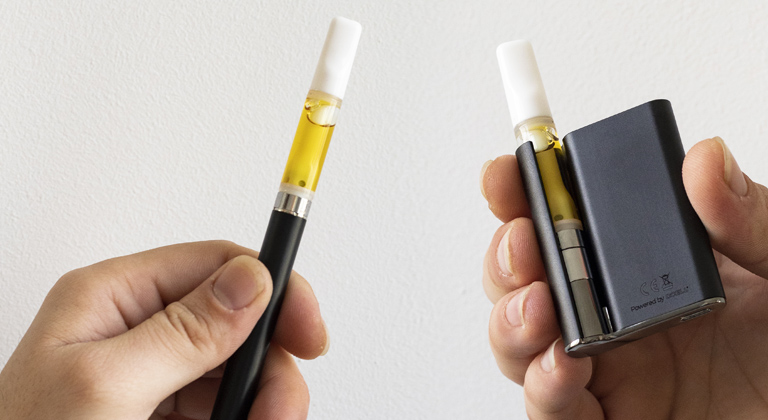Public Consultation on the Regulation of Psychotropic Substances
The international regulatory wave reached Europe a few years ago. With Germany leading this new paradigm, many countries have already legalized cannabis for medical use in the old continent.
However, Spain, which was once regarded as “the garden of Europe” due to its cannabis clubs and the apparent “permissiveness” perceived from the outside, has fallen behind in this new European legal framework.
Without a clearly established law allowing patients access to medical cannabis, and a growing number of licenses for production (ironically for the exportation of medical cannabis to other countries), the Spanish situation is really confusing.
Now, the Government has published a consultation on the draft order to update regulations concerning this subject, that is, a proposal to monitor new substances, mostly semi-synthetic cannabinoids. Before becoming an official regulation, the project must undergo a public consultation period, during which citizens, businesses, and experts can submit their suggestions to improve this update.
Context and Background: Spain and the Regulation of Psychotropic Substances
The law regarding these substances (which include cannabis) is based on the 1971 UN Convention on Psychotropic Substances. However, much has changed since then, and the development of new compounds, as well as the legalization of cannabis in many countries and states, has made it necessary to update Spanish regulations to align them with international standards.
The 1971 Convention on Psychotropic Substances established different lists to classify controlled substances according to their level of regulation and control. This classification is still valid today:
- List I: This includes substances considered to have a high potential for abuse and dependence, but with little or no known therapeutic benefits. The use of these substances is strictly prohibited unless for scientific research purposes and under authorization.
- List II: It contains substances with a high potential for addiction but with certain recognized therapeutic uses. Substances classified in this list must be rigorously controlled in terms of their manufacture, distribution, and prescription to minimize risks.
- List III: It groups compounds considered to have moderate abuse potential and broader therapeutic uses. Control measures are less strict than in lists I and II, but still remain important to prevent misuse.
- List IV: It includes substances that belong to list I but exhibit significant recognized medical uses. Their control is equivalent to that of list I, but access for therapeutic purposes is more flexible.

What’s the Draft Order on Psychotropic Substances and Medicines in Spain?
With this project order, new substances have been included in the list of controlled psychotropics, and a public consultation period has been opened until February 13, 2025, allowing comments and suggestions to be submitted.
Those interested in participating in this consultation must send their contributions to: informacion_publica@sanidad.gob.es with the submission subject: DG/03/25 APORTACIONES + NAME OF PERSON OR ENTITY.
Semi-synthetic Cannabinoids and their Inclusion in List II
Among the new substances to be added to the list of controlled psychotropics are some semi-synthetic cannabinoids:
- Substances like hexahydrocannabinol (HHC), hexahydrocannabiphorol (HHCP), and their derivatives (such as HHC acetate and HHCP acetate) will be included in List II of Royal Decree 2829/1977.
- Dipentylone, a semi-synthetic stimulant of the cathinone family, will be included in List II because of its potential for abuse and addiction, as well as for causing severe side effects such as fatal poisoning.
- 2-Fluorodescloroketamine, which is chemically related to ketamine, will also be included in List II for its ability to cause dependence, severe adverse effects, and intoxication.
- Bromazolam, a high-potency benzodiazepine, will be added to List IV because of its risk of abuse, addiction, and associated mortality.
- THCA (Tetrahydrocannabinolic Acid): The acidic form of THC will be included in List II. Even though it’s not psychoactive in its acidic form (so it doesn’t produce any effects), it turns into THC when decarboxylation occurs (by applying temperatures above 105º), which, according to the Ministry of Health and the Spanish Agency of Medicines and Medical Devices, justifies its inclusion in the list of controlled substances. THCA may not be synthetic, but it has been added to this list following the recent commercialization of products rich in this cannabinoid that easily converts into THC.
Additionally, the draft order states that THCA doesn’t have any known therapeutic uses, although some studies suggest that it does have therapeutic properties and can help treat neurodegenerative and metabolic diseases. (1), (2).
Tramadol Excluded from the Royal Decree Draft
One of the requests received in this consultation, which has been extended until February 13, was to include the medication Tramadol within the list of controlled substances. However, this proposal has already been rejected by the Ministry of Health, which argued that this inclusion “is not within the objectives of the regulatory project.”
Although this opioid analgesic has been approved for the treatment of pain in many countries, its legal status varies considerably around the world due to concerns about its abuse, side effects, and addictive potential, especially when used long-term.
What impact will the implementation of these new measures have?
If the draft order is implemented, it could affect some companies in the cannabis sector that currently produce, distribute, and market semi-synthetic cannabinoids like HHC.
This type of compounds, which hit the market a few years ago as “legal” substitutes for cannabis, could become controlled and regulated substances like cannabinoids (THC, etc.).
Therefore, this could curb the growing proliferation of these products that have emerged in the market, taking advantage of the legal loophole.
Does regulation work?
This project aims to reinforce Spain’s commitment to aligning with the international agreements on narcotics of the United Nations and WHO. However, Spain isn’t following the regulatory model regarding cannabis which is being joined by more and more countries in Europe and other continents.
It is striking that semi-synthetic cannabinoids like HHC (for which there aren’t sufficient studies on its safety and long-term side effects) have been marketed in recent years, while phytocannabinoids like THC or CBD, which are backed by decades of scientific research and present a safe profile, have remained restricted.
The prohibitionist model seems to have failed to solve the most important issue, on which patients, public health agencies, and activists agree: to ensure safe and regulated access for consumers as a means to reduce health risks.
Laws are Made to be Broken
In Spain, the regulation model for cannabis and its derivatives, among other substances, has been in operation for decades, so it might be time to assess its effectiveness.
Each time a compound is inspected, new ones are created to escape the regulations. Therefore, in an effort to protect the consumer, the system actually achieves the opposite effect, as users are pushed into a market of unregulated products whose long-term effects are unknown.
An alternative to this model would be the regulation of cannabis under a legal framework that ensures the safety of products and promotes consumer education to reduce risks. This is already a reality in some European countries, at least for medicinal use:
- Germany
- Greece
- Luxembourg
- Malta
- Portugal
- United Kingdom
- Ireland
- Denmark
- Italy
- Czech Republic
- Poland
- Norway
- Finland
- Croatia
- Cyprus
- Romania
- North Macedonia
- Portugal
- Malta
- Lithuania
- France
Why does Spain seem to diverge from the rest of the countries by perpetuating an obsolete model that doesn’t work? A cannabis regulation model wouldn’t only allow regulated and safe access to cannabis products for both patients and recreational users, but would also boost scientific research to ascertain what effects and therapeutic properties cannabinoids exhibit for the treatment of certain diseases.
As a result, there wouldn’t be a need to expand an endless list of new semi-synthetic cannabinoids whose safety profile is unknown, and which arise in an attempt to circumvent the law by exploiting the legal loophole.
The surge of new semi-synthetic cannabinoids may in fact be the result of the very solution being attempted; that is, the prohibition of cannabis for both recreational and medical use, which encourages the creation of new substances that, far from vanishing, seem to proliferate even more.

So what’s your opinion on this? We’re interested in what our community has to say! Leave your comment on this post and we’ll respond as soon as possible.
Cali Terpenes
1-Kim J, Choi P, Park YT, Kim T, Ham J, Kim JC. The Cannabinoids, CBDA and THCA, Rescue Memory Deficits and Reduce Amyloid-Beta and Tau Pathology in an Alzheimer’s Disease-like Mouse Model. Int J Mol Sci. 2023 Apr 6;24(7):6827. doi: 10.3390/ijms24076827. PMID: 37047798; PMCID: PMC10095267.
2-Belén Palomares, Francisco Ruiz-Pino, Martin Garrido-Rodriguez, M. Eugenia Prados, Miguel A. Sánchez-Garrido, Inmaculada Velasco, María J. Vazquez, Xavier Nadal, Carlos Ferreiro-Vera, Rosario Morrugares, Giovanni Appendino, Marco A Calzado, Manuel Tena-Sempere, Eduardo Muñoz,
Tetrahydrocannabinolic acid A (THCA-A) reduces adiposity and prevents metabolic disease caused by diet-induced obesity,
Biochemical Pharmacology,
Volume 171,
2020,
113693,
ISSN 0006-2952,









